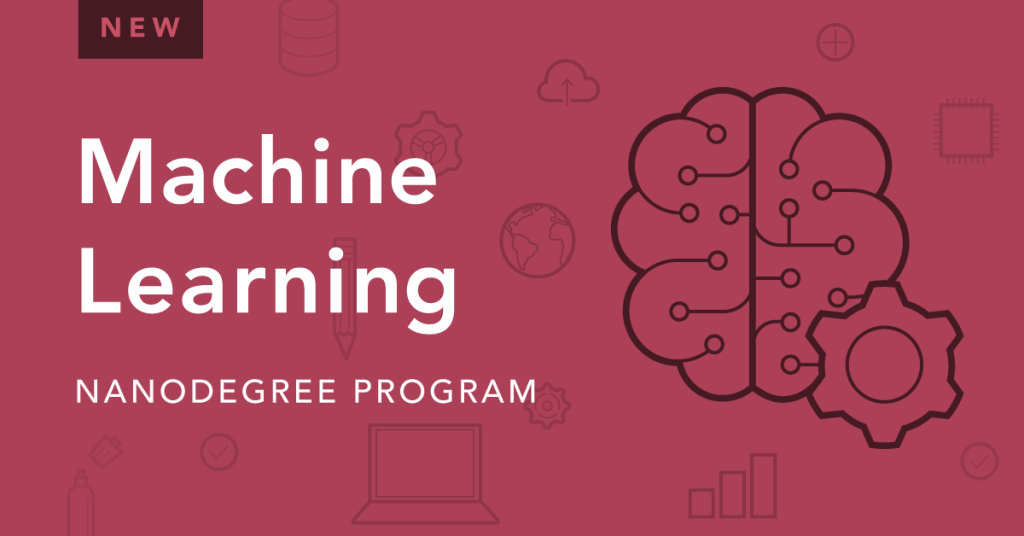In the elevators and the stairwells, at desks and in conference rooms, by the coffee machine and in the library, everyone at Udacity is talking about machine learning. Why? Because we’re launching a brand-new Machine Learning Engineer Nanodegree program, and everyone is very excited!
Machine learning is a truly unique field, in that it can seem both very complicated, and very simple. For example, compare the following two descriptions:
“Machine learning is a subfield of computer science that evolved from the study of pattern recognition and computational learning theory in artificial intelligence. Machine learning explores the study and construction of algorithms that can learn from and make predictions on data.”
and
“Machine learning is the science of getting computers to act without being explicitly programmed.”
The first is from Wikipedia, the second is from a Stanford course description. Somewhat different flavor, no? So how can Machine Learning be both so complicated and so simple? The answer lies in its omnipresence. Machine Learning is literally everywhere.
But what IS Machine Learning?
Where did it come from, what does it mean, and why is it important?
At its core, machine learning is about making sense of large quantities of data. And note: by ‘large’, we mean LARGE—literally millions of just about everything you can count, quantify, and analyze: millions of patients, millions of students, millions of trades, millions of tweets. The sheer volume of data the modern world now produces is what makes machine learning both necessary, and possible.
Of course fields like statistics and algorithms have long aimed to summarize data for making decisions and predictions, and many of the formulas and techniques used in machine learning were developed by mathematicians centuries ago. What is new is the quantity. Increases in computational power allow us to perform analyses in hours that would have taken centuries by hand.
The result: a billion times more data than we’ve ever had before, and a billion times more power to make sense of it. How is this all made possible? Machine learning! Literally, a machine “learning” concepts from data. It learns like we do every day: it looks at experiences and observations and discerns useful information. But while we can do that based on a couple dozen experiences, machine learning can do it based on millions of experiences, all rigorously and numerically defined.
So what do machine learning engineers actually do?
Simple! Machine learning engineers build programs that dynamically perform the analyses that data scientists used to perform manually. And why is this important? Think for a moment of all the fields where data is very important. Healthcare, education, astronomy, finance, robotics, and more. Machine learning is already impacting them all, and in fact, there is virtually no field that machine learning won’t impact!
This is one of the key reasons why machine learning is so fascinating, because it’s everywhere. Often, it’s operating when we don’t even realize it. Ever used Google Translate? How about Siri? Your Facebook News Feed? All made possible through machine learning! If you know a bit about Udacity, you’ll know that our founder and CEO Sebastian Thrun himself has a long and remarkable history in the field, from founding a Master’s program at Carnegie-Mellon that evolved into a Machine Learning PhD program, to being director of the Artificial Intelligence Laboratory at Stanford University, to leading the development of the Google driverless car.
Google Translate may in fact be one of the most famous (and most utilized!) examples of machine learning in action, and Google’s description of how it works makes for a pretty classic illustration of the concepts at play:
Machine Translation is a great example of how cutting edge research and world class infrastructure come together at Google. We focus our research efforts towards developing statistical translation techniques that improve with more data and generalize well to new languages. Our large scale computing infrastructure allows us to rapidly experiment with new models trained on web-scale data to significantly improve translation quality.
The key sentence here is “techniques that improve with more data.” This is really the essence of machine learning.
In 2006, Tom Mitchell published The Discipline of Machine Learning. In it he posed the following question:
“How can we build computer systems that automatically improve with experience?”
Machine learning is the answer to this question, and it’s why we’re launching our new Machine Learning Engineer Nanodegree Program!






